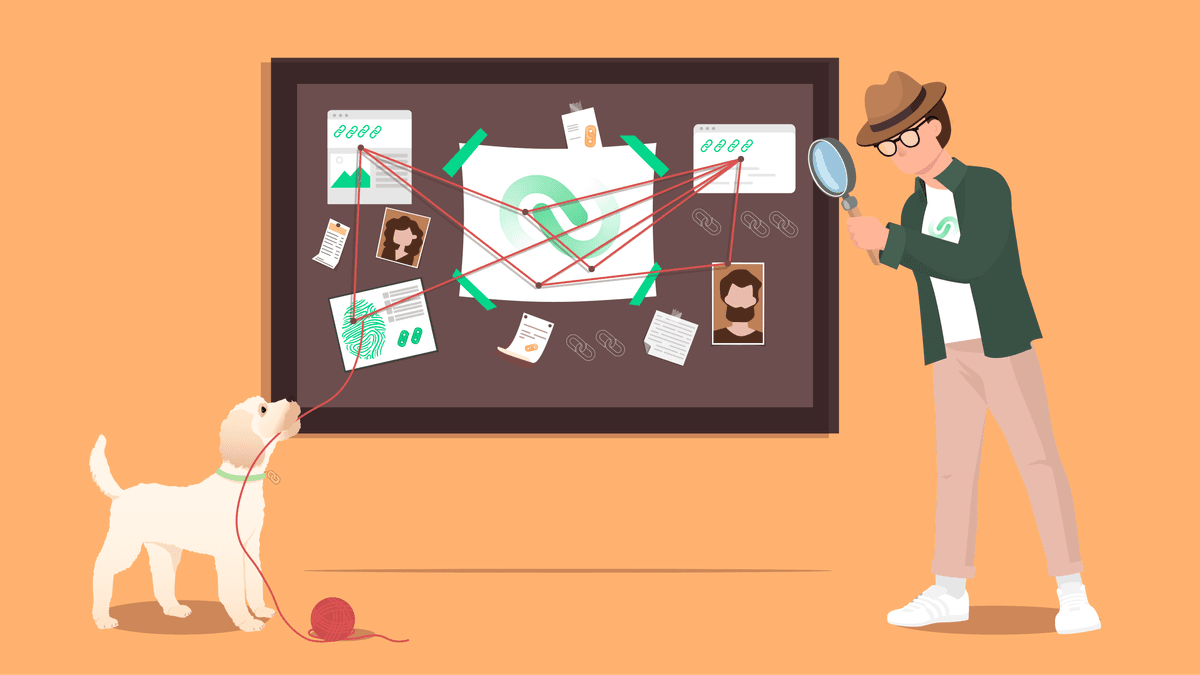
Ranking on Google is no longer about having as many backlinks as possible – it’s quality that matters.
In most search engines’ eyes, some links are better than others. Contextual links are a good example of this.
Getting lots of contextual links pointing to your website is probably the most effective way to boost your ranking on search engines.
That’s why your link building campaigns should be geared toward earning as many contextual links as possible.
In this article, we’ll cover the following:
What contextual linking is.
What the benefits of contextual link building are.
The strategies you can use to build high-quality contextual backlinks.
Key Points
Search engines like Google give more weight to high-quality links related to the content they’re linking to.
Contextual links can increase your domain authority (DA) and site traffic.
There are several strategies you can use for high-quality contextual link building.
What Is a Contextual Link?
A contextual link is a backlink that you get from another webpage where the content is relevant to the information on your page.
A contextual link:
Is surrounded by content that relates to it.
Is related to the page it is linking to.
Is optimized to improve the page's keyword rankings.
Makes the context of the link clear for readers.
Below is an example of a contextual link within a body of relevant content. It links to Moz’s in-depth page on “domain authority.”
Non-contextual links are those typically found in the headers and footers of sites. Take the links at the bottom of our page as an example.
Contextual links offer a great user experience because they give people an idea of what to expect when they click a contextual link.
Contextual link building can help boost your website's credibility with search engines, which will lead to higher rankings..
Types of Contextual Links
Contextual links can be categorized by where they are.
There are three different types of contextual linking based on your perspective:
- External links - An external link appears in your website's content and links back to another website, like in our previous Moz example.
- Internal links - These are links in your content that point to other pages on your website.
- Inbound links - are when other websites have external links pointing to one of your web pages.

We can also categorize contextual links based on how they are gained. These include:
- Natural backlinks - These links are acquired organically. A good example is if you mention a brand in your content and decide to link to its website.
- Link insertions - This is when you ask a site owner to add a link to your website in an already published piece of content. We’ll discuss several strategies for link insertion later on.
- Reciprocal links - Reciprocal links are when you and another site owner agree to link to each other’s websites.
Benefits of Contextual Link Building
1) Increased domain and page authority
Backlinks are votes in favor of the authority and trustworthiness of your content.
For search engines, high-quality contextual backlinks are an even better indication of a site’s authority. This is why earning them will improve your site's overall domain authority.
If you have a backlink profile that comprises high-quality contextual backlinks, then your content has a better chance of reaching the top of the search engine results pages (SERPs).

2) Better UX
Placing contextual links in your content provides an improved user experience by sending site visitors to information relevant to the topic they are interested in.
Contextual linking often adds value to your content, for example, by helping users to understand a subject better or by pointing them to valuable resources.
3) Increased referral traffic
Contextual backlinks can also help generate referral traffic to your website.
By linking to your website, site owners tell users that your content is valuable and worth sharing. As a result, backlinks will give you more visitors as referral traffic.
Contextual backlinks are more likely to be clicked on because they are super relevant to the topic that the user is reading about.

4) Greater brand awareness
Contextual backlinks tell potential customers that you’re a trusted information source on a topic that they are interested in.
By providing content that is highly relevant to this topic, you gain their trust. This can help strengthen your brand, make customers more aware of your business, and even improve your sales.
5) Exponential link growth
People writing on your topic may be sent to your site via contextual backlinks. Because the link they clicked is highly relevant to your content, there’s a good chance that the writer will like what they see. They are, therefore, more likely to link back to your content on their own website, which helps to grow your backlink profile with more contextual links.

Best Practices for Contextual Linking
The effectiveness of a contextual link depends on the page’s traffic and the quality of its backlinks.
Link building can be a difficult and lengthy process. That’s why if you want a return on investment when undertaking a linkbuilding campaign, it’s important to target the best possible websites.
When deciding who to target with contextual linking, you should always:
1) Link to relevant websites
Your linkbuilding campaigns should target websites with content that is relevant to yours.
They don’t have to be in the same niche as you, but they should be from a related industry, and they should be talking about a topic related to your services or products.
In the example below, Search Engine Land has given us a contextual backlink.
It is relevant because:
- We are in a similar niche (SEO and link building).
- The link is in a body of text that is relevant to the topic (reputable link building services).
- It links to us, a link building service.
Avoid building backlinks with pages that have no industry or topic relevance.
2) Pick high-quality sites
To evaluate a site’s quality, check metrics like its domain authority and the number of backlinks it has. You can use SEO tools like Ahrefs’ “site explorer” to gauge the quality of a website.
But don’t just rely on these metrics, as new sites always start with low domain authority. Low domain authority doesn’t mean a site is bad or not worthwhile linking to.

It’s important to check a site manually. You’ll easily be able to figure out if it is a legitimate site or not and whether you’re happy to receive a backlink from it.
Look out for:
- Low-quality content.
- Unrelated anchor text.
- Low traffic to the site.
3) Be wary of paid links
Google has a hard stance against any artificial link building that involves paying for links.
That being said, there can be circumstances where payment is necessary to secure a contextual link.
It comes down to the quality of the link and if it looks natural.
Check our article on buying backlinks the right way.

Strategies for Building Contextual Links
Create high-quality content
Whether you want to earn links naturally or you are about to embark on a link-building campaign, the key to building contextual links is creating high-quality content.
When someone gives you a backlink, they are recommending you to their users. Therefore it is important to write useful content that they will want to share with their audience.
Here are some good examples of content people will want to link to:
Free tools.
White papers.
Research.
Guides.
Thought leadership articles.
The Trump Tax Fraud Campaign we ran for one of our clients is a great example of this.
This piece was a factual look at Donald Trump’s history of tax evasion. It ultimately generated over 150 backlinks, including backlinks from high authority sites like Slashdot and Mashable.
Ultimately it comes down to creating unique, original, and high-quality content if you want other websites to recommend users to your site.
Manual outreach
Manual outreach involves finding sites related to your own niche and reaching out to them with an offer to contribute content or to get a link insertion as a relevant source for their readers.
You can find potential targets using search engines, directories, and other SEO services.
💡Content curators
A content curator is someone who chooses, collects, packages, and shares content from around the web.
Curated content comes in the form of lists of high-quality resources on a given topic. A good example is “best of” lists.
If you can connect with content curators who make these resources available on the web, you’ll increase your chances of getting your links in context.
The Moz Top 10 newsletter is a brilliant example of curated content.
It’s a roundup of the ten best SEO pieces. Getting a backlink from here can only do you good.
Create content that positions you as a leader
Create original content that shows off your knowledge and expertise. To do this, your material needs to be original, thought-provoking, and useful.
This builds trust and credibility with your audience, which in turn positions you as a leader in your niche.
People will trust you and feel more comfortable linking to your content.
Here’s a good example from Neil Patel. Neil is a very well-known figure in the digital marketing world. He gained popularity by creating useful, original insights like the ones in this video.
Use broken link building to get higher search rankings
You can quickly and easily build contextual links by finding broken links on websites in your niche.
You can then contact the site owner and ask them to link to your content.
Broken links aren't good for a website, so the chances are they will accept your backlink request.
Here's how to perform broken link building:
Get a list of high-quality websites and search for broken links on them. Begin by checking your competitors’ backlinks on a tool like Ahrefs. Navigate to the “best pages by incoming links” tab, and in the drop-down menu, choose “404 not found” This will bring up the broken backlinks pointing to their site.
- Once you have identified a site with a broken outbound link, see if you have a similar piece of content that could replace it. If you don't, it may be worth writing something new.
Next, contact the site owner. Notify them of the issue and ask them to replace the broken link with your content.
Interviews and podcasts
A great way to earn contextual links is to get interviewed on a website or podcast.
Most people link back to you in their show notes, which are hosted on their site. You end up getting a backlink and a mention on their site.
Look for a show or website that likes to interview people or businesses. Try to choose those with a strong social presence or a high-authority domain when you make your prospect list.
Don’t worry if the show doesn’t have a huge following. Even though they don’t have a large fanbase right now, that doesn’t mean they won’t grow.
Appearing in these places doesn’t just help your linkbuilding. It also boosts your brand by giving you a platform to talk about your products, services, and staff.
Here’s a good example of an interview I did with the podcast Let’s Talk Linkbuilding. Needless to say, this is highly relevant to what we do!
Write guest posts
Guest post writing is an effective way to earn contextual backlinks. That’s because it’s a win-win for both parties. The author gets a backlink, and the publisher gets free content for their website.
The advantages of writing guest posts are:
- It’s one of the more natural means of gaining contextual backlinks.
- You have more control over the content of the page that is linking to you.
Using guest writing effectively means finding the right prospects.
So how do you go about finding guest writing opportunities?
Compile a list of sites you want to be featured on. Make sure to vet your list of relevant websites before you write a guest post for them. You can use SEO tools like Ahrefs to find who is linking to your competitors.
Reach out to the sites on your list. Use email or social media, and be clear with your intentions in your pitch. The pitch should focus on what it offers them, not just how you intend to promote your business.
The target website should have the same user base that you’re trying to target to ensure that you gain relevant traffic.
Below is a good example of a guest post that appears on Bplans. The writer has linked a few times to their own business. The links they have included are contextually relevant.
Conclusion
With almost every update, Google and other search engines push for content to become more useful and relevant in answering users’ queries.
This has changed how links are evaluated. They need to be relevant and useful. That makes contextual links extremely valuable.
Getting these high-quality links is a tough process but also a worthwhile one. If you can implement the strategies we’ve discussed, your site’s search rankings will improve steadily along with your user experience.
Need help building a high-quality backlink profile?
Let LinkBuilder run your campaigns for you. We have a long history of helping our clients rank higher on search engines. We do this by generating high-quality links. Get in touch to find out what we can do for your site.


